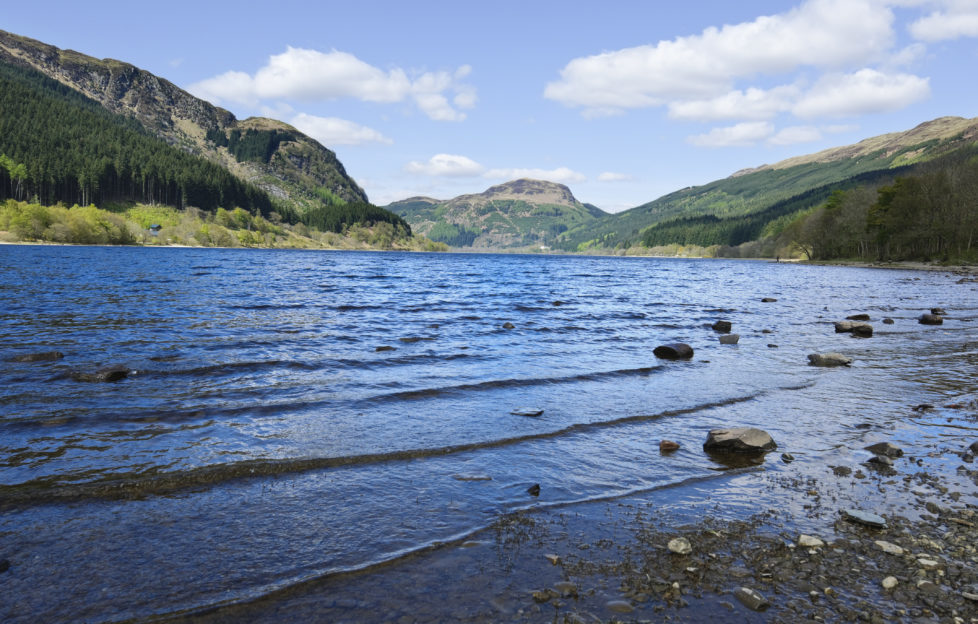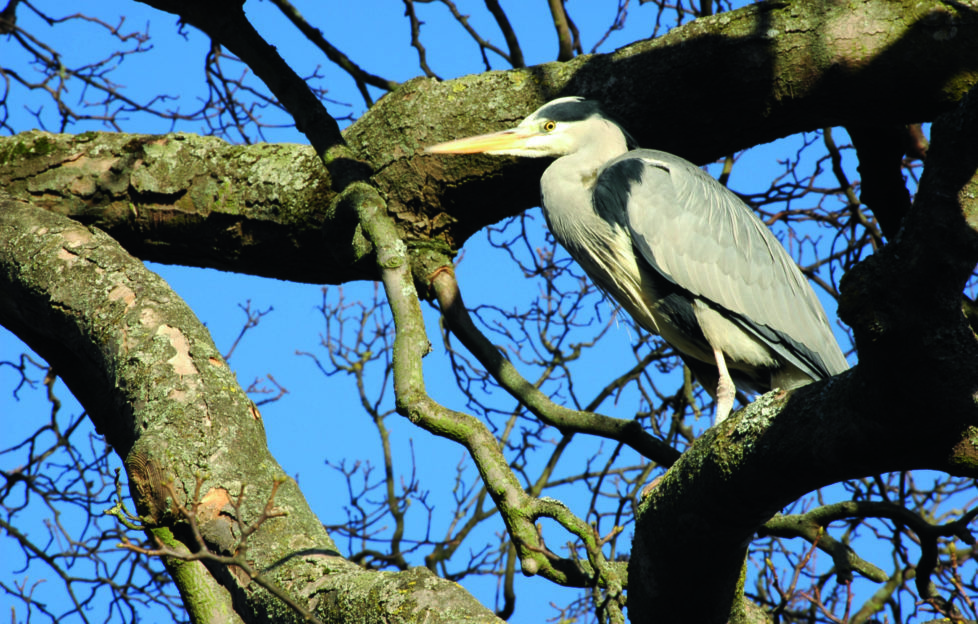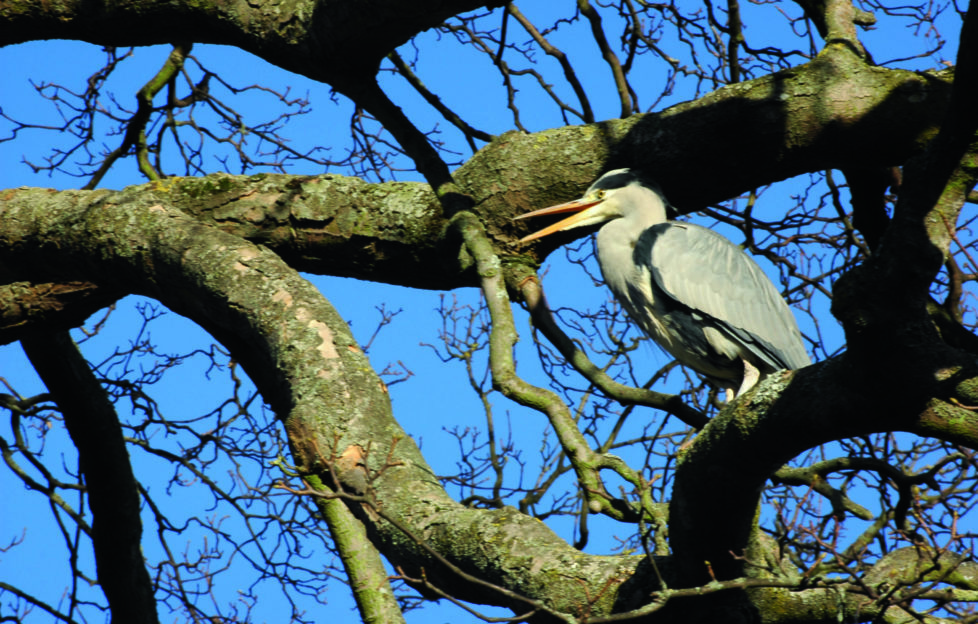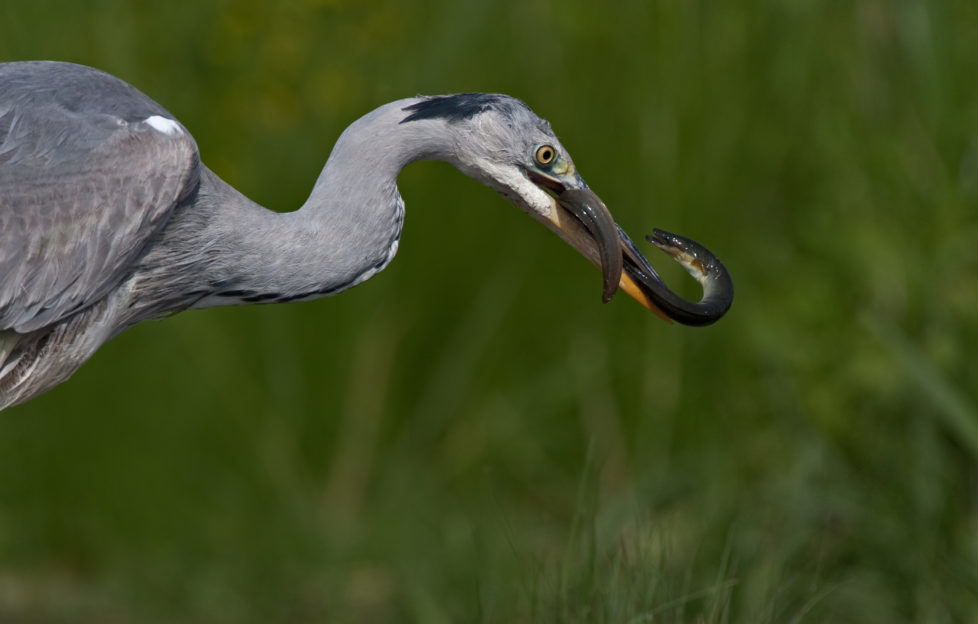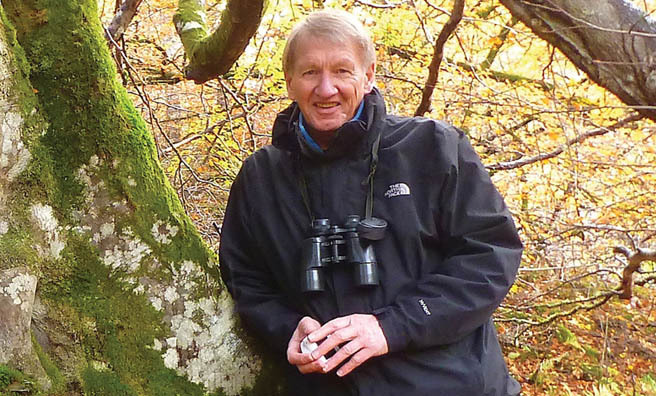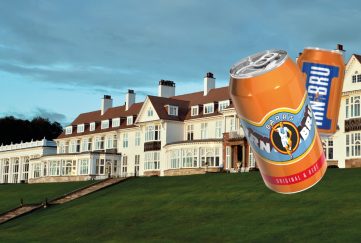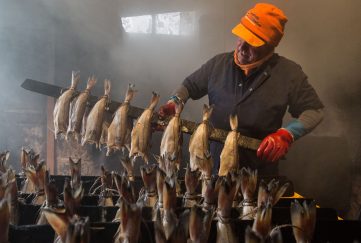Herons – Dressing Down
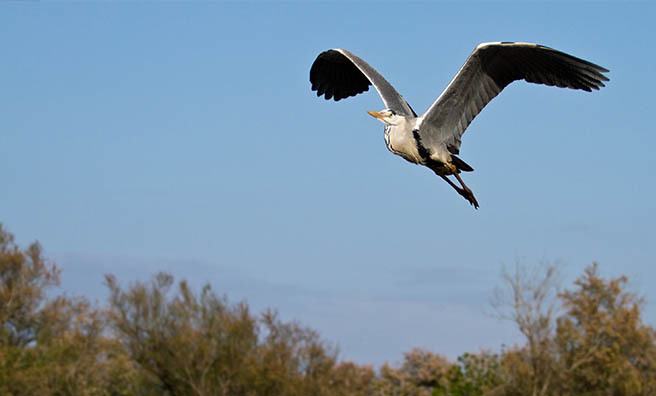
No prizes for herons in fashion or architecture…
Herons, I once wrote, are flamingos dressed by Presbyterians. I like the image so much, here it is again. The writer’s conceit, revisiting his greatest hits, like Acker Bilk playing Stranger on the Shore, just one more time.
I like herons, and they seem to follow me around and stare at me, so that I imagine they are demanding silently that I write them down. Here goes.
Starting more or less now, with the year new-born and unpredictably inclined backwards to midwinter (the devil you know) or skittishly forwards (the first hallucinatory dice with spring), herons begin to head for the heronries where they begin to build weird heaps in treetops.
Architecture is not their strongest accomplishment. You would think that a bird with a propensity for building twiggy nests in big trees at a season of the year renowned for the caprices of big winds… you would think that such a bird might have evolved some sophisticated building techniques.
Sadly, this really isn’t the case…
Instead, they build their nests where winds can get at them, and they build them like the first of the three little pigs built his house, and one good huff and puff and the nests are in many pieces on the ground, and as often as not their eggs or chicks are in pieces there too.
The heron has a solution to the crisis, albeit an unsophisticated one. It builds another nest a little later, presumably in the inspired hope that the wind will die down. If that doesn’t work (perhaps because its hope was misplaced or because it snowed in April or May, the way it sometimes does), it will often try yet again.
So a heron nestling can take its first flight any time between May and September, but one way or another, the job mostly gets done. It does, however, make me wonder why they start to nest so early in the year with so many of nature’s odds conspiring to make them look like idiots, or why they never learned to build better nests.
The two heronries I know best are on the A84, the main road from Stirling to Lochearnhead, a busy enough trunk road between Lowland and Highland Scotland, and one where its characteristic long straights and inviting bends lure motorcyclists with a screw loose to gatecrash the herons’ front gardens at upwards of 100 miles per hour.
On the other hand, I also know a heronry on a little island well out into the mouth of Loch Laxford, a west coast sea loch in Sutherland, and a landscape so devoid of trees that the herons make do with cliff ledges. There, at least, they are spared the heart-stopping intrusions of motorcyclists.
A Convention of Scarecrows
Back on the A84 at Blair Drummond, what looks at first glance like a convention of scarecrows has gathered in a roadside field on an almost still and drizzly February-into-March afternoon. Almost still, but not quite, because every now and then a breeze like a weary sigh snuffles across the field and lifts the skirts of the scarecrows and ruffles their bizarre headgear. I have found a farm road-end I can pull into for a few minutes.
The scarecrows are untroubled by the arrival of the car, so I shuffle over into the passenger seat, lower the window enough to accommodate the binoculars, and a shallow semi-circle of fourteen herons snaps into focus.
They stand all facing the same way as regularly spaced as fence posts and just as immobile, heads hunched into their scarecrow coats, until suddenly one lunges at the ground by half unfurling its neck, tilting from the waist and snatching a frog that apparently walked straight up to it. You have to wonder about frogs sometimes, for the sheer number of different ways of dying they have invented for themselves.
This field with the gathering of herons is a hundred yards from the heronry, and they can reach it from the nest without so much as a wing-beat. The gathering is an annual event, as is the march of the frogs across the fields. I wonder what toll the heronry takes in a single frog-marching season. The smart frogs cross the field at night, or maybe those are just the lucky ones who happen to reach the field in darkness – and maybe there are no smart frogs.
The A84’s second heronry is at the north end of Loch Lubnaig between Callander and Strathyre, where the shallows of the loch and the nearby Lochan Buidhe and the fluctuating wetland of the Balvaig’s flood plain all yield abundant feeding opportunities. But in a hard winter, which can often extend into the heron’s traditional nesting season, it offers no feeding at all and the birds vanish.
Frozen water and frozen ground scatter the native birds to the coast, where there is serious competition from large numbers of Scandinavian birds which are also looking for an easier winter. When herons can’t find fish and frogs they hunt voles, and that puts them in competition with almost everything from raptors to foxes to big gulls to farm cats.
For the survivors of all that, the thaw and the sudden arrival of the mad marching frogs must feel like nature has suddenly remembered them, and the cycle of life can begin again.
An Entertaining Spectacle
There again, in times of plenty, and a river-hunting heron tackles a fully-grown eel, the resulting confrontation is among nature’s more entertaining events. If it happens to unfold within sight of a busy bridge over the Water of Leith at Cannonmills in Edinburgh, it gathers a small crowd in moments like a Festival street juggler.
There are already three or four passers-by pointing fingers, cameras and phone-cameras at the statuesque heron deep in the shade of bankside willow.
Nothing moves for several minutes apart from the water where it swirls demurely and dark about the bird’s ankles. Then the neck straightens and leans out like the jib of a crane an improbable distance over the water.
The most intense stare this side of a snowy owl is focussed on… well, on nothing at all that we can see.
The strike, when it happens is so fast that no one is sure what they just saw, but the heron’s head is completely submerged and the water is suddenly turbulent.
When the head re-emerges it has an eel coiled round it, a big eel, and the crowd on the bridge gets loud and excited.
The heron is hell-bent on swallowing the eel’s head, an outcome which the eel is violently trying to avoid.As long as it remains coiled around the heron’s beak, the heron can’t swallow it, but the beak has already got a grip on the middle of the eel so the best the eel can hope for is to keep the beak from opening any wider.
The heron has done this before. It buries its head in the water again and holds the eel under. How often do you hear of an eel drowning?
The impasse lasts five minutes, and still the eel threshes and coils, and still the heron ducks it under or throws it in the air and catches it again, at which point the eel wreathes the long yellow beak in new coils.
Slowly, the balance changes. The combination of repeated attempts at drowning and too much time in the air begins to tell on the eel and its struggles diminish. The heron suddenly loosens the coils, open his beak wide and the eel’s head disappears.
… With An Uncomfortable Finale
After that, it begins to die, slowly and bit by bit. The process – the all too visible process for the now disgusted watchers on the bridge – of swallowing the eel seems to take hours. It is as off-putting as it is compulsive viewing.
Finally, after a series of grotesque distendings, the heron’s neck resumes something like its normal shape, but the bird’s discomfort is palpable, as if it has bitten off rather more than it can chew and is immediately regretting it.
It flies, low and slow upstream, then veers away north towards the Botanic Gardens where it will find a tall tree to perch for an uncomfortable hour or two while it digests the enormity of what it has just done.
Shortly after I bore witness to the event, I was driving my more accustomed route up the side of Loch Lubnaig with an eye on the loch to the left, both eyes on the road, and one eye on the trees to the right as I approached the heronry there.
You often see the birds crossing the road carrying nest material or bearing a bellyful of food back to the nest for its young, and sometimes they display a total lack of road sense. It pays to be wary.
Always – apart from once – the birds cross the road well above the trees. The once in question unleashed a heron from the roadside directly below the heronry. It rose from the ditch more or less vertically, but then drifted out into the roadway not ten feet above the ground.
As it did so, it… how can I put this… defecated mightily, a bomb-burst of a missile, and a direct hit on my windscreen which was travelling at about 40 miles an hour at the time.
I would guess that I travelled completely blind for the next 50 yards before the wipers made any impression on the results at all, and a lot further than that before I could reliably see where I was going again.
It was the height of the nesting season, so far too early for there to have been eels in the loch or the river, but whatever that heron had eaten, there had been an awful lot of it, which is why the eel came into my mind in the first place.
A flamingo dressed by Presbyterians maybe, but God help us if Presbyterians’ most uncompromising manifestation ever progresses beyond hellfire and brimstone to that stuff.
In the current issue of The Scots Magazine, Jim tells a tale of ravens and redwoods – out now!
More…
Click the image below
to read more past
features by our resident nature writer


